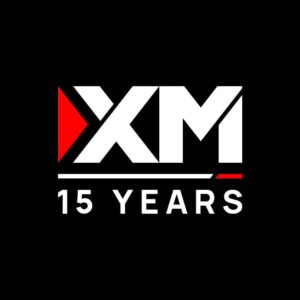
Opendoor Technologies (ticker symbol OPEN) was front and center in Stock Market conversations last Friday, as its open stock soared 42%. This jolt stemmed largely from Federal Reserve Chair Jerome Powell’s remarks at the Jackson Hole symposium, where he hinted at interest rate cuts possibly arriving as soon as September. Given the sensitivity of the real estate sector to borrowing costs, Powell’s signal carried significant weight—reflected almost instantly in the opendoor stock price. Such a move spurred animated reactions on social platforms, with the open door ticker trending among the most discussed tickers by the weekend.
Opendoor’s Climb: New Peaks in an Uncertain Year
During the latest rally, Opendoor shares shot above $5 for the first time in over two years, marking a 52-week high and positioning OPEN as the fourth-largest gainer among S&P 500 stocks that day. Buzz around the stockmarket open today grew increasingly feverish, with Stocktwits seeing opendoor stock clinch the top spot for conversations by late Friday.
Retail investors quickly set bolder short-term targets—$10 became a recurring theme in message boards and chat rooms. One Stocktwits user’s post—“$OPEN – can we see $10 by the end of this coming week?”—mirrored the optimism and speculative appetite of the moment. Activity spilled into after hours stock trading, with Opendoor notching an extra 4% rise in extended session trades. Market action in such after hours periods often follows immediate headlines, and this week’s Fed commentary proved no different.

Influencers and Their Impact on Opendoor’s Stock
A single tweet or podcast mention can sometimes move markets, a lesson not lost on open stock traders in 2025. Anthony Pompliano, commonly known as “Pomp,” has made his stake in Opendoor public and attributed much of the current rally to Powell’s messaging about coming interest rate cuts. Eric Jackson, head of EMJ Capital, has remained an outspoken supporter. Just weeks ago, positive commentary from Jackson helped trigger a rapid 200% gain for Opendoor over four trading sessions. Both figureheads have substantial followings—when they talk, people listen.
The iBuyer’s ongoing CEO search further complicates sentiment, adding an additional potential catalyst for investor speculation. It’s a dynamic not unusual for companies in transition. Much like a football team searching for a new coach, uncertainty can bring both risk and opportunity. As the stock exchange open today developments roll on, investors scan for signals not only in the company’s balance sheet but in broader market currents and the words of key players.
What Are Retail Investors Watching?
- High volumes of social chatter suggest strong interest in opendoor stock price surpassing $10.
- Fed rate cut expectations are stoking both excitement and bullish speculation.
- Management shifts and operational updates add fuel to discussions around the open door ticker.
- Many traders are closely tracking opinions issued by market influencers and analysts.
Financial Health and the Bigger Picture
Excitement aside, Opendoor’s underlying financial results remain a talking point. In Q2 2025, Opendoor reported a net loss of $0.03 per share, an improvement from the $0.04 loss a year prior and slightly ahead of Wall Street’s expectations. Revenue rose to $1.65 billion, a 5% year-on-year gain, propelled by increased home purchasing—a figure that echoes stabilization in the broader U.S. housing market, which recently posted a modest 3% annual price growth (source: NAR).
Despite these incremental improvements, Opendoor has not yet posted annual profits. Macroeconomic headwinds—including still-elevated mortgage rates and sector competition—continue to pose challenges. Wall Street’s view remains cautious: Seven major analysts rate the stock as a Moderate Sell, with only one Buy, two Holds, and four Sells. Collectively, they set an average price target of $1.02, about 80% below where the stock currently trades, suggesting widespread skepticism that the rally is supported by fundamentals.
Year-to-Date Comparison: Opendoor and Major Indices
| Stock / Index | Year-to-Date Return |
|---|---|
| Opendoor (OPEN) | +213% |
| S&P 500 | +12% |
| Nasdaq Composite | +16% |
| Dow Jones Industrial Average | +8% |
Opendoor’s outperformance is remarkable. But it has more to do with crowd sentiment—fed by high-profile endorsements and social media currents—than stark improvements in profitability or cash flow. “FOMO” doesn’t always last, as many a retail trader on Stocktwits would attest.
Market Hours Explained: Why Trading Timings Matter for Opendoor
With so many eyes on stockmarket open today, it’s easy to overlook the rules of the game. The New York Stock Exchange (NYSE) typically runs from 9:30 a.m. to 4:00 p.m. Eastern, but appetite for extended hour trading is growing. These premarket and after hours sessions see more activity during news-driven events, such as the recent Fed remarks or Opendoor’s earnings reports. Sometimes, the real action happens in those “off hours”—where lower liquidity can exaggerate price movements for stocks like OPEN.
Opendoor’s near 4% gain after regular hours last Friday underlines how swiftly traders react when major news hits. Unlike in traditional sessions, price swings here can happen in relative silence—no closing bell, just headlines and digital trades.
Popular Platforms for Today’s Retail Traders
- Open Fidelity brokerage accounts: Provides real-time data, fractional share trading, and easy access to stock trends.
- Stocktwits: Key for monitoring trending tickers such as Opendoor and surfacing retail sentiment in real time.
- Yahoo Finance alerts: Useful for catching quick price changes or news about after hours stock movements.
Looking Forward: What Could Move Opendoor Next?
The Federal Reserve is projected to introduce two interest rate cuts in the second half of 2025 (source: Bloomberg). These anticipated moves have injected optimism into sectors sensitive to rates, with real estate and technology firms like Opendoor in sharp focus. If these rate adjustments materialize, borrowing costs—both for corporations and homebuyers—could fall, setting the stage for possible future surges.
On the company side, the ongoing CEO search may either alleviate or compound uncertainty. History shows that executive transitions sometimes spark fresh interest—and sometimes volatility. With Opendoor’s business model tied to housing market cycles, leadership and monetary policy changes could intersect in unpredictable ways.
For traders riding the open stock rally, balancing momentum-driven moves with careful attention to financial performance and sector risks is essential. Tools like openai stock analysis platforms, NYSE trading hour trackers, and timely brokerage alerts offer ways to stay informed as conditions shift.
Summary Table: Key Drivers and Risks for Opendoor (OPEN)
| Aspect | Details |
|---|---|
| Recent Rally Catalyst | Fed Chair Powell’s suggestion of rate cuts at Jackson Hole |
| Retail Investor Sentiment | $10+ price targets powered by social media discussions |
| Financial Fundamentals | Q2 2025 loss of $0.03/share; revenue up 5% to $1.65B |
| Analyst Ratings | Consensus: Moderate Sell, average target price $1.02 |
| Key Risks | Housing market exposure; ongoing losses; CEO transition uncertainties |
| Trading Considerations | Track NYSE hours, watch after hours moves, monitor breaking news |
Conclusion: A Cautious Approach to the Opendoor Wave
The recent rally in Opendoor’s shares is shaped by a blend of macroeconomic speculation, social sentiment, and market adaptability. For those considering action in the stockmarket open today, a careful balance is essential. Analyst consensus remains skeptical of the stock’s fundamentals, while real-time tools and timely news reminders have become the retail investor’s lifelines.
Remaining alert to both external drivers—like Fed statements—and internal shifts at Opendoor will likely be crucial. As the playing field continues to evolve, both seasoned and new investors may find it pays to weigh the signals from both the crowd and Wall Street before their next move.

















